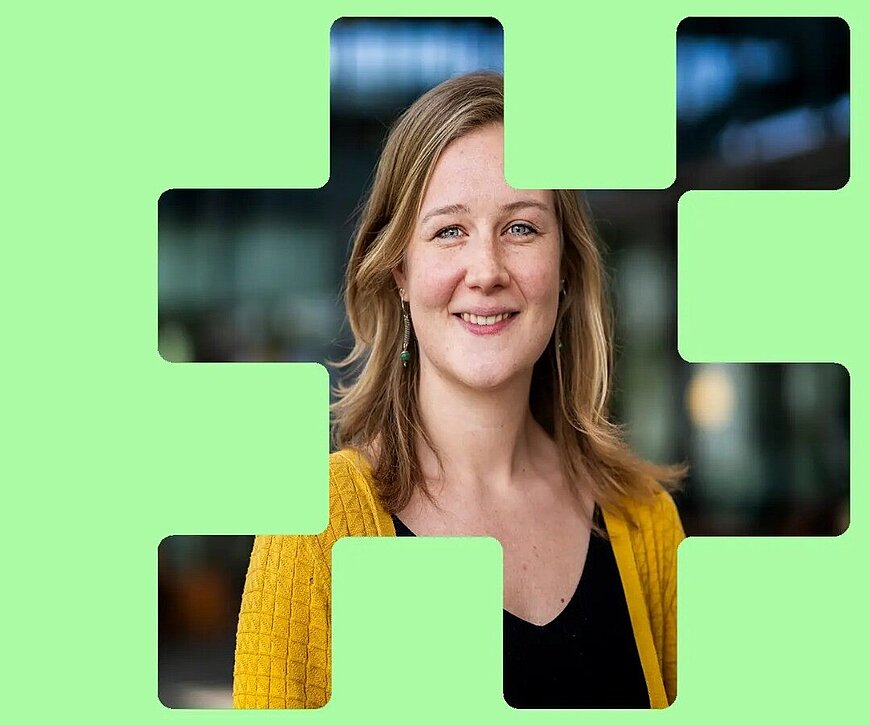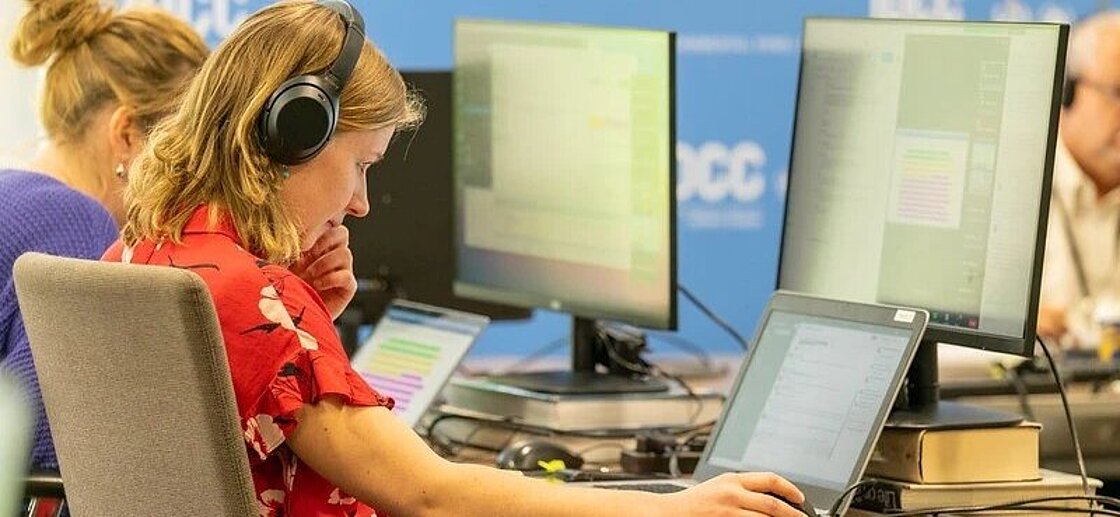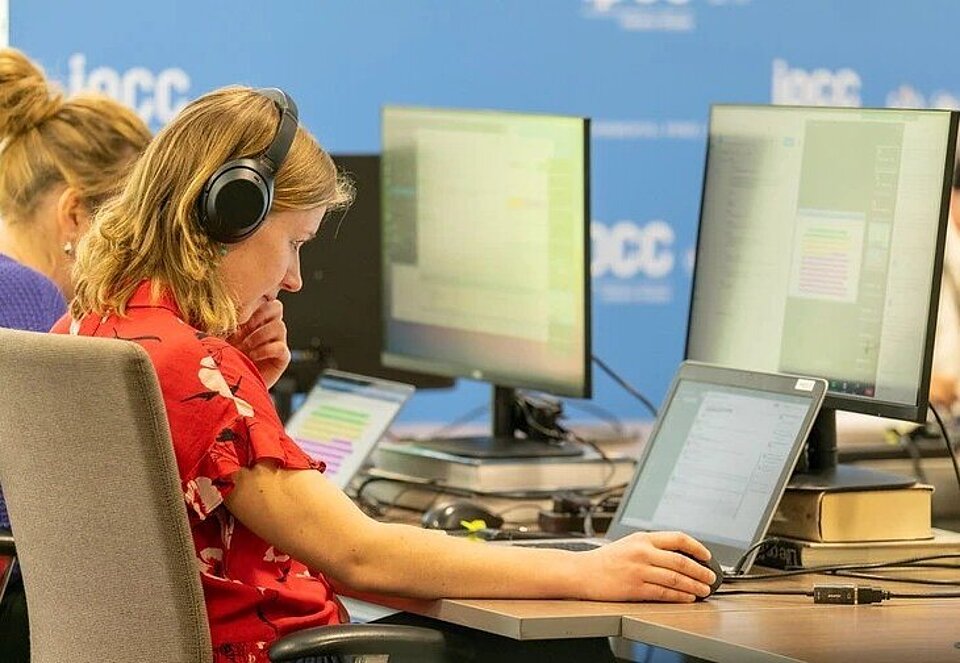Unravelling the green transition, one technology at a time

From climate curiosity to action: scientist Kiane de Kleijne's journey in assessing green technology.
As a child, Kiane de Kleijne wasn't sure what she wanted to be, because she was fascinated by both science and society. ‘I did realise that I wanted to be a problem solver,’ she says. As a researcher, she focused on the most pressing challenge of our time: climate change.
The scientist is a postdoctoral researcher at Eindhoven University of Technology (TU/e) and is part of the Technology, Innovation, and Society group. She focuses on assessing the climate footprint of emerging technologies that contribute to the green transition. Last year, for example, she conducted a life cycle analysis for green hydrogen, which showed that it does not always lead to the promised CO2 reduction.
Her awareness and urge to do something about climate change arose during her studies. ‘The topics of sustainability and climate change resonated with me. Especially because climate change disproportionately affects those who have contributed the least to the problem. It felt so unfair,’ explains the scientist.
Assessing green tech
But what does conducting a life cycle analysis entail? Put simply, it means tracking every step in the life cycle of a particular technology. In the case of green hydrogen, for example, this also means that researchers examine how the renewable energy used to produce hydrogen is generated. This includes emissions associated with the production of wind turbines or solar panels.
Ultimately, the goal – through a clear understanding of the technology – is to identify which processes cause the most emissions and reduce them. This provides policymakers with effective tools to tackle climate change.
The complexity of the green transition
Integrating all available technologies as effectively as possible is key to the green transition. According to Kiane, ranking the advantages of each technology is a good way to make the right connections, especially in light of their ultimate use.
"Efficiency is the first rule of thumb. At the same time, it is essential to assess whether the technology reduces emissions sufficiently. In other words, does it help to reduce emissions by 55% by 2030 and to zero by 2050? A technology that is currently only being applied on a laboratory scale may not have any impact now, but it may do so in a few years' time," she emphasises.
At the forefront of climate research
A major highlight in Kiane's young career is her participation in writing the report of the Intergovernmental Panel on Climate Change (IPCC) in 2017 and 2018, which she started when she was still a master's student. Her professor, Heleen de Coninck, who has been involved with the IPCC for decades and is vice-chair of the Scientific Climate Council, was the one who first involved her in this. Kiane also contributed to the next edition of the assessment.
Kiane helped De Coninck edit her chapter of the report and coordinated it with the other chapters. From creating graphs to processing comments and endless nights of work, it was a valuable experience for her.
“What impressed me most was the motivation of all these scientists and the passion with which they do this work,” she recalls. And there is more. Because the IPCC report was requested by countries that are part of the organisation, those who worked on it had extra motivation. ‘Showing them what the difference between a temperature rise of 1.5 and 2°C would mean was a way to spur them into action.’
2024 was the warmest year on record. It was also the first year in which the average temperature at the Earth's surface was 1.5°C above pre-industrial levels. "In 2018, I was optimistic about limiting global warming to 1.5°C. Now I can no longer be so hopeful because we have not yet taken significant steps on a global scale to reduce emissions. This does not mean that nothing is happening. European countries, for example, are reducing their emissions, but we need to accelerate these efforts."


Choices for the green transition
Economic competitiveness has been one of the most important topics in Europe in recent months. How can the need to promote a competitive, potentially growing economy coexist with the need to transition to a greener society? This aspect is also part of Kiane's research.
‘In the Netherlands, the production of green hydrogen for energy-intensive industries is not practical; it may not make sense to maintain them. They are built on top of a natural gas supply. At the same time, I am aware of the importance of such industries from a strategic point of view. There needs to be a balance.’
Nevertheless, Kiane sees the green transition more as a social problem than a technological one. ‘There is much more to be done in terms of governance, financing and behaviour. It is much more a problem of making decisions and shaping the transition in a way that everyone participates,’ she adds. According to the researcher, people's involvement in this is crucial.
Solidarity
Since Donald Trump took office as President of the United States, geopolitical tensions have escalated. Among the decrees signed by the White House resident on his inauguration day was the withdrawal of the US from the Paris Agreement on climate change. These recent geopolitical developments are a cause for concern for the postdoctoral researcher.
‘The climate transition requires cooperation and a common goal in order to share the benefits and burdens that come with it. Although perhaps not the whole world will cooperate, I still hope that important parts of the world will continue to work together and even strengthen their partnerships,’ she emphasises.
This sense of togetherness is also always present in Kiane's work. ‘It comes to the fore when supervising students, because you always learn together. And even more so when you do research, because you work closely with people. Taking the next steps to make the world a better place – together with others – is what I enjoy most about my work.’
